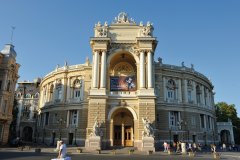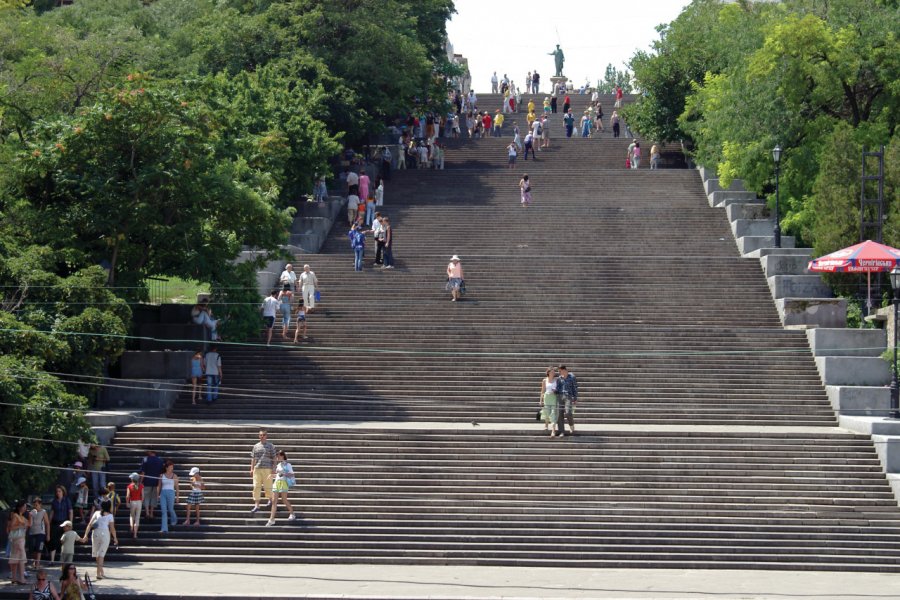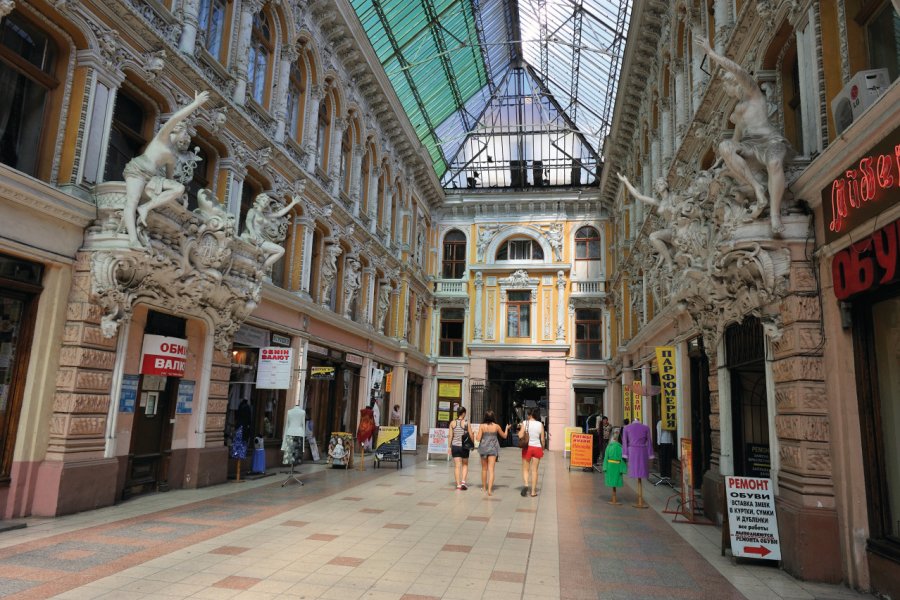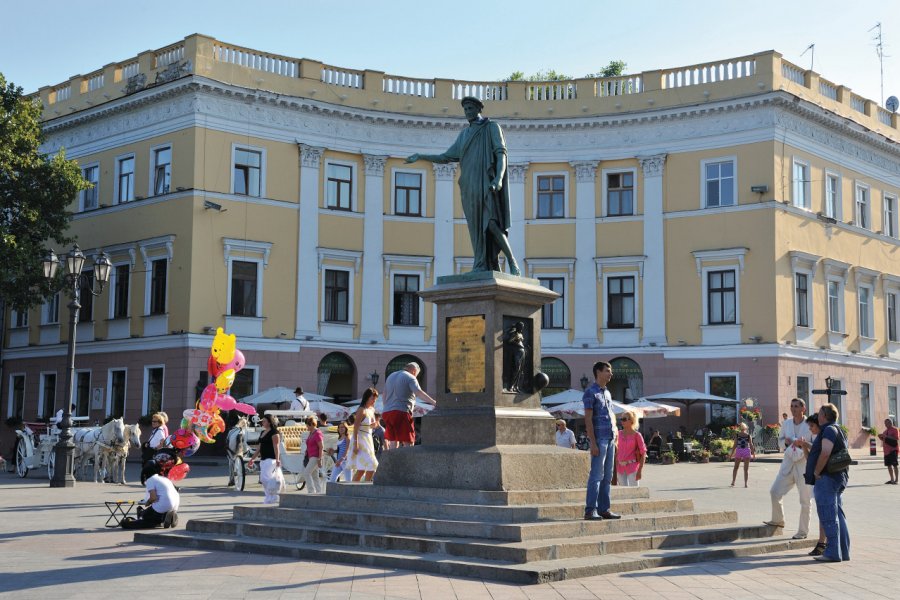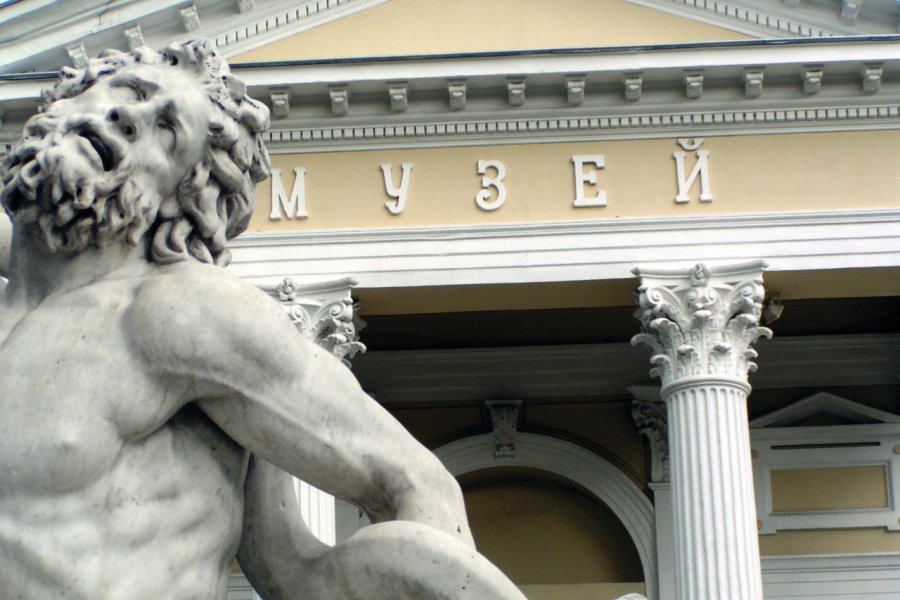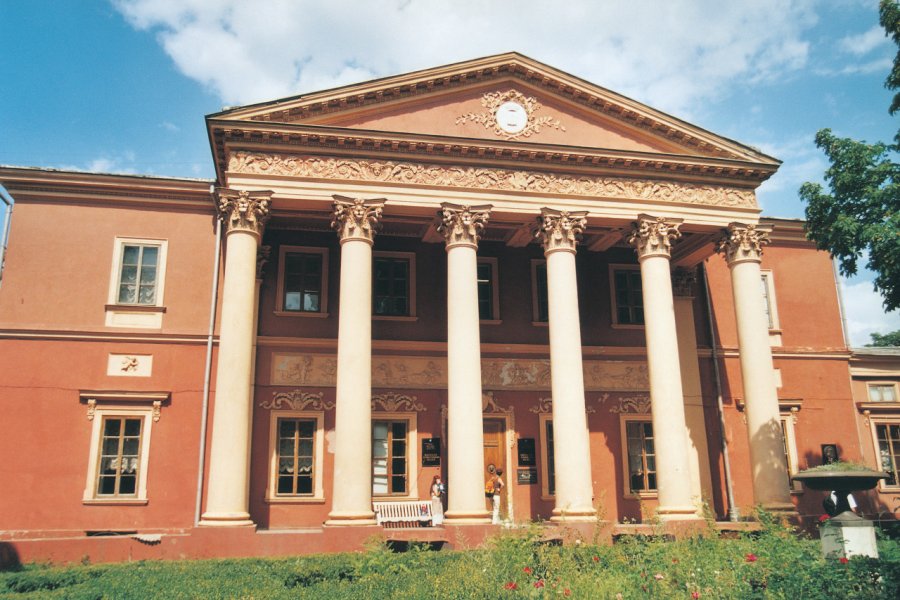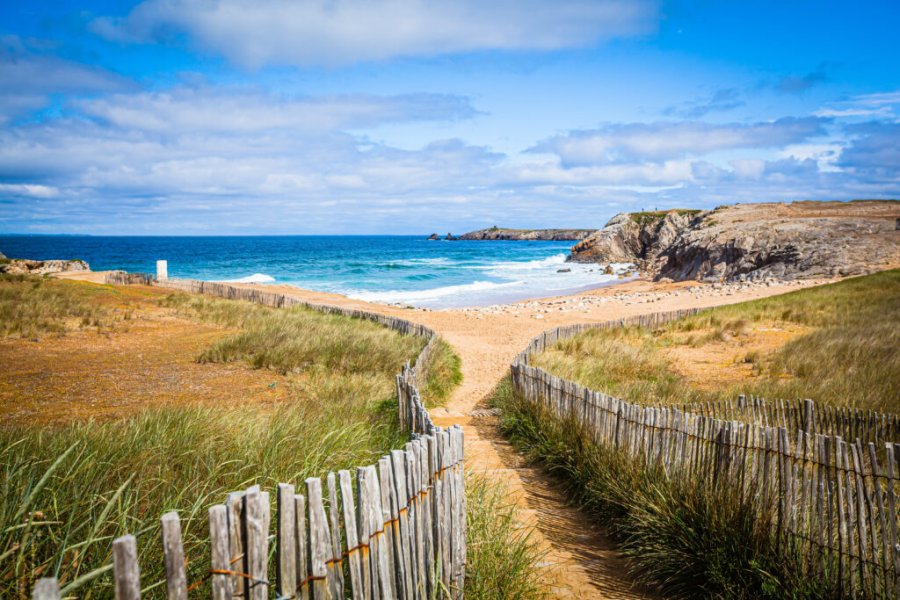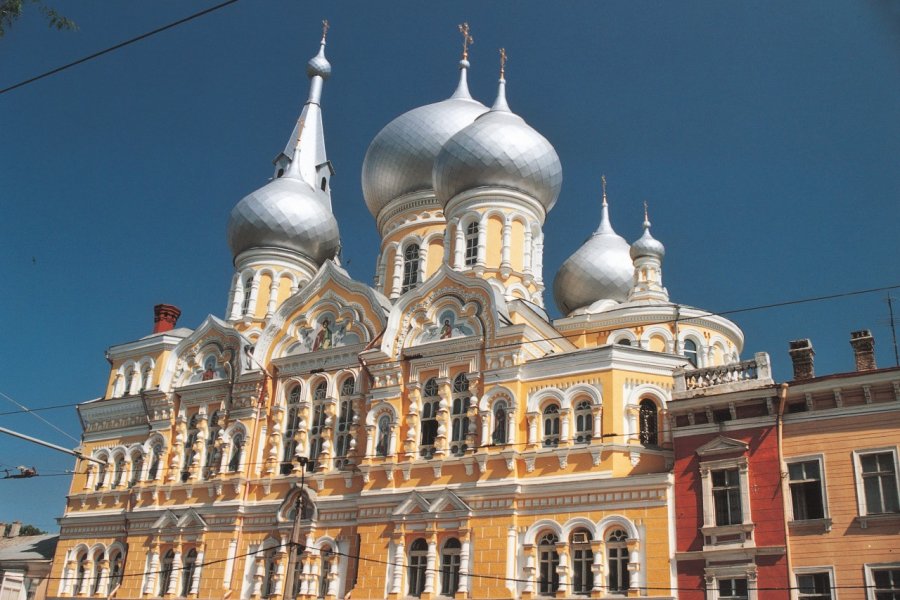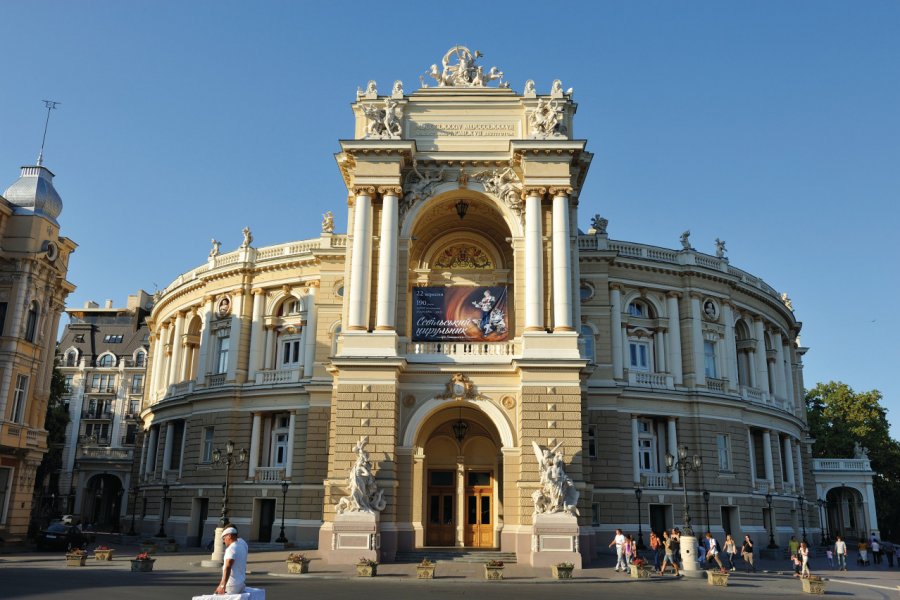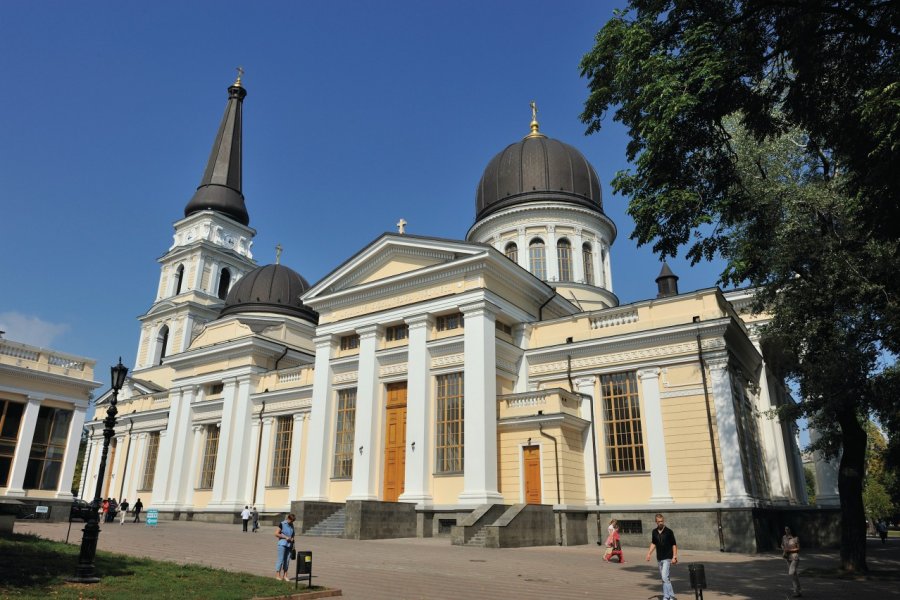Travel Guide Odessa (Одеса)
Find an accommodation
Advertising
The regions around the Black Sea are historically part of the lands conquered by Empress Catherine II and annexed to the Russian Empire. These regions, which at the time were a kind of Wild West within the Empire, were wild steppes that had to be civilized and populated at all costs, a task that the Empress entrusted to her favourite, Prince Grigory Potemkin. It is difficult today to imagine Ukraine without its South, its beaches, its turquoise sea, Odessa, its Pearl on the Black Sea, and the Danube.HistoryThis gigantic port on the Black Sea was founded in 1794 by Empress Catherine II in place of the Turkish fortress of Khadzhibei, conquered by the Russians in 1792 during the war with the Turks. It was named after an ancient Greek colony in the region, Odessos, feminised in Odessa by Catherine II. The Russians had already succeeded under Peter the Great in getting access to the Baltic Sea, with Odessa, Russia gets access to the Black Sea. Catherine II immediately understood its economic importance. She quickly built a port. She wants to make Odessa a western city. It convenes European architects and it is the Dutchman François de Wollan who draws up the plan of the city, in the form of a chessboard, just like St Petersburg.Later, having become a free city, i.e. without customs duties or any real passport control, Odessa welcomed all outcasts, escaped slaves or Jews driven from Moscow, for whom Odessa became Odessa-mama, a name still affectionately used today. A piece of land was offered to everyone and, in the space of half a century, Odessa's population tripled. Trade flourished and, in the 19th century, the city enjoyed its heyday as the second largest port in the Russian Empire after St. Petersburg. It was then at the centre of the Russian revolution of 1905 and the scene of a historical episode that would make it world famous: the mutiny of the battleship Potemkin, immortalized by the filmmaker Eisenstein in 1925 in his famous Battleship Potemkin. This city is also the cradle of the great writer Isaac Babel, murdered in 1941 by KGB police officers.Odessa todayDuring the Second World War, Odessa suffered extensive damage but despite all its scars, it is easy to fall in love with it. Its boulevards are lined with acacias, the elegant pastel facades of its buildings are ochre, pink and blue and the iodine smell of the sea pleasantly stings your nostrils. The streets still bear the traces of the many communities that have made their homes there: Albanian Street, Jewish Street, Greek Street or French Boulevard. It is not surprising that writers like Chekhov or Balzac have fallen under his spell.Odessa's charm is also linked to the myth of a free and cosmopolitan city that has accompanied it since its foundation. Founded by the Russians, built by the Italians, governed by the French, economically developed by Jews and Greeks, inhabited by Ukrainians, Moldovans, Bulgarians, Poles and Tatars, this city has always been a border city, different from the rest of the country and open to the world, a city that was never Russian and is not really Ukrainian today.Odessa is simply Odessa, a world apart, an incredible mix of ethnicities and languages to which writers like Isaac Babel, Vladimir Jabotinski, Arkady Averchenko, Il'f and Petrov have dedicated their best works. Until the 1970s, Odessa had a strong Jewish community, but today there is not much left of it, most of it having emigrated to New York, to the Brighton Beach area, which is called Little Odessa.Already known as the humor capital during the Soviet period, Odessa has always had a reputation for hosting excellent joke tellers. Every year, on April 1st, which is a public holiday, the famous Yumorina festival of humour and satire is held.The city continues to rebuild itself in a very dynamic way. After the annexation of the Crimea Odessa became the main port city of the country, its maritime gates. Nicknamed the Russian Marseille, Odessa is a mandatory stopover during a trip to Ukraine. Sparkling and warm, Odessa never stops surprising by offering strong emotions and unforgettable impressions to each of its visitors.
What to visit Odessa (Одеса)?
Advertising
Suggested addresses Odessa (Одеса)
Weather at the moment
Advertising
Organize your trip with our partners Odessa (Одеса)
Transportation
Book your plane tickets
Car Rental
Boat rental
Accommodation & stays
Find a hotel
Holiday rental
Find your campsite
Tailor-made trip
Immersion travel
Services / On site
Activities & visits
Find a doctor
